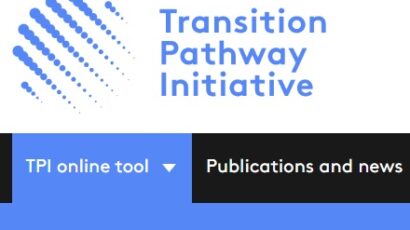
Net zero: From good intentions to real change
The causes of climate change and the catastrophic implications of failing to act quickly and decisively to address it, are now clear and unequivocal.
If you were to ask any well-informed person whether the transition to net zero was an urgent environmental and business imperative, they would almost certainly answer “yes”.
However, although most organisations have the best of intentions, many still struggle to factor Greenhouse Gas (GHG) emissions reduction into business decision making on a day-to-day basis. This article explores why and proposes three areas of action to address this.
1. Set targets right (don’t just set the right targets)
An increasing number of organisations are setting ambitious net zero targets at a corporate level: For example: “we will reduce Scope 1, 2 and 3 emissions by 50% by 2030 and achieve net zero by 2050.”
This is an example of the right target. To have a realistic chance of being delivered, it needs to be the right target, set in the right way. This requires it to be:
- Achievable: This doesn’t mean only setting objectives that are easy to hit! Achieving net zero is hard. What it means, is that for an objective to have meaning and be effective in driving action, it is vital that there is a clear understanding of how the objective will be achieved. It is still not unusual to see big, ambitious headline goals, such as the one above, with little substance on plans and investments to deliver on them.
- Pressing: Perhaps because top line net zero objectives are so big and, in relative terms, so distant, it can be hard for them to cut through to the ‘important and urgent’ of day-to-day business decision making. To avoid net zero always being “tomorrow’s problem” until it is too late, it is essential to define stretching GHG reduction targets each year, which progressively contribute to the ultimate, multi-year target.
- Personal: For an objective to influence behaviours, it’s vital that people in the organisation feel ownership for and connection with it. It needs to be personal. This typically only happens if the objective is cascaded down through the organisation, into the objectives of divisions, teams and individuals, so that it has relevance to their day-to-day decision making. Even in organisations that are effective at cascading other targets (such as efficiency, revenue and market share, etc.) it is still relatively commonplace to find corporate net zero goals, such as the one above, not being cascaded effectively or at all.
2. Apply a ‘common currency’ for emissions to determine priorities and track progress
You get what you measure. There is no value in setting targets and goals if you lack the knowledge or means to either identify priority actions to achieve these goals – or to track progress in delivering on them.
It’s easy to compare and measure alternative business choices and decisions when the benefits are purely financial. Indeed, most organisations are ‘hard wired’ to be able to do this well. However, when it comes to objectively measuring and tracking emissions reduction, many still struggle.
Consequently, it’s still common to see investment proposals go into great detail on the financial benefits of a change project – whilst emissions get a cursory mention, often in very broad and unspecific terms, such as “improved sustainability”.
The key to overcoming this challenge is to establish and embed a ‘common currency’ for measuring emissions. This enables a like-for-like comparison of seemingly very different initiatives and opportunities - and is essential for effective net zero opportunity identification and prioritisation.
The ‘common currency’ typically applied for measuring GHG emissions, is tonnes of CO2 equivalent (CO2e) – and it provides a common basis for equating all GHG emissions back to the warming potential of a tonne of CO2 over a defined (typically 100 year) timeframe.
It may sound complicated, but the CO2e impact of different business activities is actually straightforward to estimate using standard emissions rates/factors. These are included in publicly available calculators from the likes of the UNFCCC or the Greenhouse Gas Protocol (which also provides a Scope 3 evaluator). There are also an increasingly sophisticated range of Sustainability Management Systems available which can, amongst other things, help to automate the process of calculating emissions.
3. Ensure your ‘scorecard’ is balanced in reality, not just in name
Including emissions reduction as part of an organisation’s ‘balanced scorecard’ is a key first step, but financial productivity and performance are so deeply ingrained in behaviours and decision making, that non-financial goals often still come a distant second, in terms of priority.
So, how do you bring genuine ‘balance’ into your balanced scorecard?
One way, which an increasing number of organisations are pursuing, is to take the ‘common currency’ concept one step further and attach a financial value to each tonne of CO2e emitted.
This is called Internal Carbon Pricing (ICP) and its aim is to motivate change in day-to-day decision making, by giving a clear, measurable financial advantage to choices which contribute to emissions reduction.
There are typically two main ways in which an ICP can be implemented:
- Shadow pricing: This approach (which is the most commonly used) embeds an ICP into investment decision making, but does not result in any financial flows or money transfers and therefore does not affect P&Ls. Here is an illustrative example of how it might be applied in practice: A business needs to make a choice between two alternative courses of action. For the same cost, one option delivers cost savings of £100K p.a. and no emissions reduction. The other option delivers cost savings of £75K p.a., but also reduces emissions, which (once the ICP is applied) have a value of £50K p.a. Without an ICP, the business would likely choose the first option. With an ICP, it would likely make the more sustainable choice and select the second option.
- Carbon fee: In this approach, emissions are capped and Business Units (BUs) are charged a fee per unit of their CO2e emissions. Unlike shadow pricing, this does impact on BU P&Ls – and therefore requires a change to internal accounting processes. The fees collected via a ‘carbon fee’ model, are typically invested in carbon reduction initiatives.
One of the most important questions to answer when setting an ICP is what level do you set it at? Some organisations base it on the current cost to offset. However, an increasing number take a more holistic approach, accounting for the true future ‘cost of carbon’ to their business, once climate-related risks are fully taken into account (e.g. disruption to operations, loss of sales, cost of capital, etc.).
Other related questions to answer in setting up ICP include:
- Is the level set the same for all parts of the business – and for all types of decision?
- Does the ICP cover and apply equally to all emissions scopes? (i.e. scopes 1, 2 and 3)
- Does the price remain static, or does it change over time?
To help setting and implementing ICP, the Carbon Disclosure Project (CDP) provides best practice guidance to help answer these questions and more – and conducts regular research into the ways in which ICP is being applied by organisations in different sectors, around the world.
In summary
Setting and committing to the right corporate goals is a good start, but being successful in delivering on net zero requires three additional things:
- To define and embed goals in the right way, so that they’re achievable, personal and create a sense of urgency
- To embed a ‘common currency’ for determining emission reduction priorities and measuring progress
- To achieve a genuine balance between financial and emissions reduction goals, through mechanisms such as Internal Carbon Pricing.
Guest authors
Our guest authors write in a personal capacity and the views expressed within may not reflect those of Chapter Zero.



